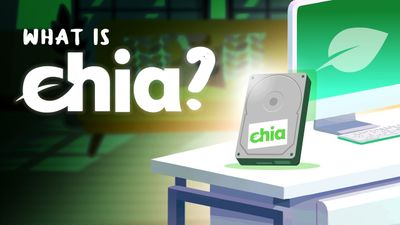Ace quick missions & earn crypto rewards while gaining real-world Web3 skills. Participate Now! 🔥
Umoja: An Automated Approach to Retail Investing with Synths and Smartcoins
Key Takeaways
- Umoja is an innovative asset management protocol that seeks to provide retail investors with automated investment opportunities;
- Synths and smartcoins provide flexible, risk-managed investment options that optimize yields autonomously;
- The UMJA token will facilitate governance, fee discounts, and protocol protection, adding significant value to the ecosystem.
Umoja, the world's first smart money protocol, is taking a different approach to asset management by introducing innovative tools like Synths and smartcoins, offering retail investors enhanced returns and reduced risks.
Umoja is an asset management protocol that aims to break down the barriers that prevent retail investors from accessing top-tier investment opportunities typically reserved for institutional investors. By automating complex financial strategies, Umoja enables anyone to participate in advanced asset management without the need for extensive financial knowledge.
What are Synths?
Umoja's core product is Synths, which are tokenized asset management strategies that also act as the foundation for creating smartcoins. A Synth is essentially a proprietary trading algorithm that replicates the performance of traditional financial instruments like options. Synths are backed by user collateral, meaning investors are impacted solely by the performance of the Synths they utilize, based on the collateral they provide.

Did you know?
Subscribe - We publish new crypto explainer videos every week!
What is a Crypto Bull Run? (Animated Explainer + Prediction)


Umoja offers two types of Synths – Synth Options and Yield Synths.
Yield Synths, also known as Yield-Generating Synthetic Dollars, are designed to offer dollar-denominated, principal-protected returns in all market conditions. They always aim to return the USD value of the initial investment, regardless of market volatility. Yield Synths provide a competitive edge over traditional synthetic stablecoins by ensuring principal protection and yield generation, making them an attractive choice for risk-averse investors seeking steady returns.
A Synthetic Option (Synth Option), on the other hand, is an algorithm that mimics the economic behavior of a traditional crypto option. This is achieved by continuously adjusting positions in a portfolio of tokens and perpetual contracts based on market movements. Umoja's Synth Options allow the automation of crypto trading with 10x leverage and no liquidation risk.
There are two types of Synth Options offered by Umoja – Synth Put Options and Synth Call Options. Synth Put Options allow investors to hedge against potential losses by betting on the future decrease in the price of an asset. Synth Call Options, on the other hand, let investors take leveraged positions on the future increase in an asset's price.
How to Use Synth Puts and Calls?
Synths can be directly used through Umoja's dApp. Investors can select from a variety of Synth strategies depending on their market outlook and risk tolerance. Here’s a step-by-step guide on how to use Synth Put and Call Options:
- Select the Synth Option type (Put or Call) at the top of the Synth creation form.
- Select the token you want to protect or bet on from the list and enter the amount you wish to use.
- Choose the duration for your Synth Put or Call. The end date is when your Synth will expire, specifically at 11:59:59 PM on the selected date.
- Choose the strike price, which is the price at which your protection starts (if it’s a Synth Put) or the price above which a Synth is activated (if it’s a Synth Call). Once you do that, a notification will appear about collateral maintenance (click "Learn more" if you need more information about it).
- Click on "Details" to review the Synth you are creating and the total down payment amount. Then, proceed by clicking "Connect your wallet" or "Place Synth" (if you’ve already connected your wallet).
- Click "Confirm Synth" to pay for the transaction. Once approved by your crypto wallet, you will be redirected to the Synth details page in your Dashboard.
You can find visual tutorials on how to use Synth Put and Call Options on the Umoja website.
What are Smartcoins?
Now, another product of Umoja I’ve mentioned before is smartcoins, which are self-trading digital assets built using Synths. They are designed to autonomously trade their underlying value, making them a new class of assets known as smart assets.
The process of creating a smartcoin involves two key components: a base asset and a Synth strategy. The base asset provides the inherent value, while the Synth strategy governs the trading behavior.
This combination allows smartcoins to maintain and optimize their value independently, offering a hands-off investment approach for users. Some smartcoins that will be available on Umoja include yBTC, USDb, bstETH, and bstBTC.
The UMJA Token
The last important part of the Umoja ecosystem is the UMJA token, which has not been launched yet. However, the UMJA token generation event (TGE) is planned for August 2024. The maximum supply of UMJA will be 1 billion tokens, of which a significant amount will be dedicated to public airdrops and staking rewards.
UMJA will serve multiple purposes, including governance, protocol fee discounts, and insurance.
By staking UMJA tokens, users will be able to participate in the governance of the protocol, influencing important decisions and developments. Besides governance capabilities, though, tokens staked in the Governance Pool will also provide additional yield rewards.
Moreover, holding UMJA tokens entitles users to discounts on protocol fees, reducing their overall costs. The token also acts as a safeguard, with staked USDC in the Insurance Pool protecting the protocol from unforeseen events. However, staking tokens in the Insurance Pool not only helps protect the protocol from capital shortfalls but also earns rewards.
It's also worth noting that Umoja plans to implement a system where fees collected from Synth usage and asset minting are partially used to buy back UMJA tokens on decentralized exchanges, supporting the token's value.
Overall, Umoja seeks to transform asset management by making sophisticated financial strategies accessible to retail investors. Through the use of Synths, smartcoins, and the UMJA token, Umoja offers a unique combination of automated risk management and yield optimization.
























